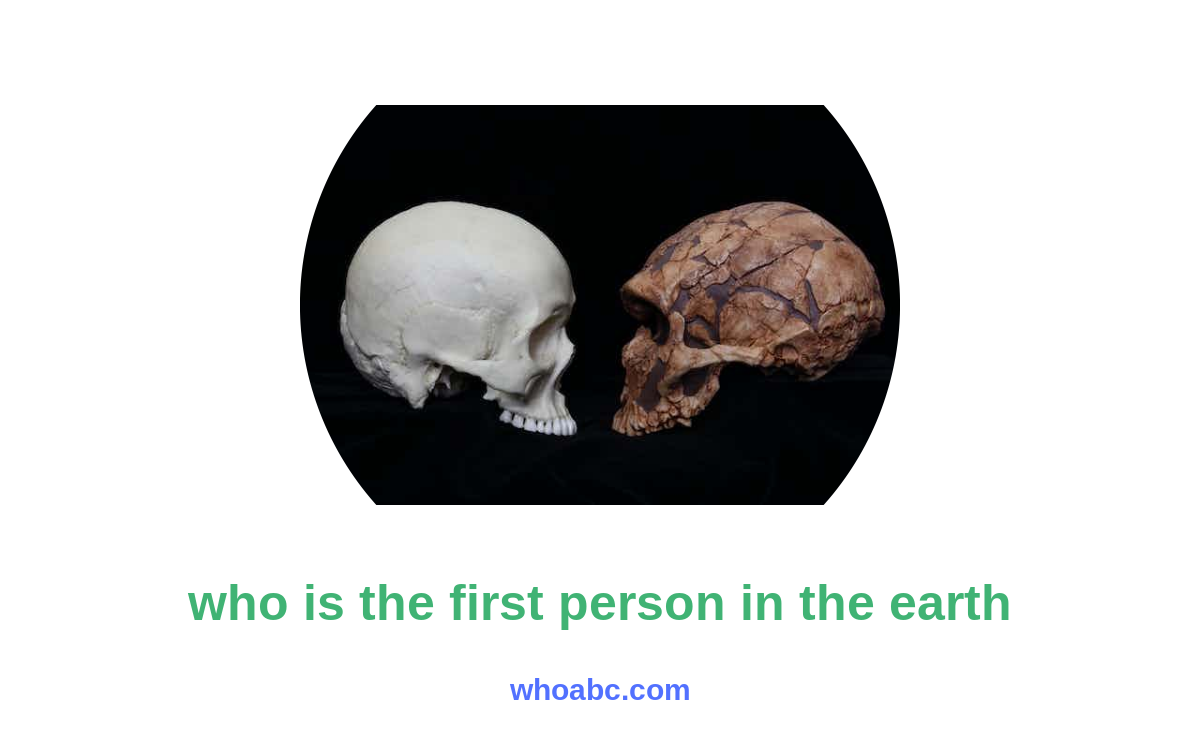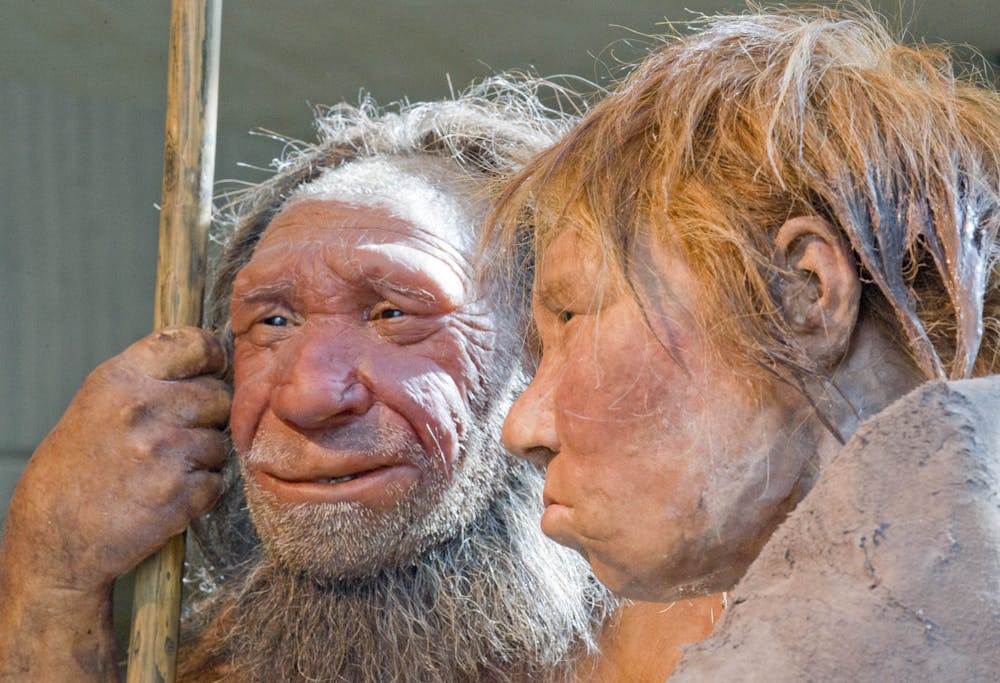Unlocking the Mystery: Unveiling the First Human Being on Earth
This page for Unlocking the Mystery: Unveiling the First Human Being on Earth.


The Search for the First Human: Unraveling the Origins of Mankind
The quest to determine who the first human being on Earth was is a tantalizing mystery that has captivated scientists, historians, and archaeologists for centuries. While the answer to this question may never be fully known, we can explore the origins of mankind through various scientific disciplines and the analysis of ancient artifacts.
Paleontologists, anthropologists, and geneticists have all played crucial roles in piecing together the puzzle of our human ancestry. By studying fossils, genetic material, and analyzing the evolution of our species, they have been able to gather important insights into our earliest human ancestors.
Our journey begins millions of years ago, with the emergence of Homo erectus, the first species to resemble modern humans. This Homo erectus was believed to have lived in Africa around 2 million years ago. However, the question of who was the first Homo sapiens, the species to which we belong, remains unanswered.
Unveiling the Earliest Human Ancestors: A Journey Through Time
To trace the lineage of Homo sapiens, scientists have had to go back even further in time. The study of ancient hominid fossils and genetic analysis has revealed that our closest relatives are the Neanderthals and Denisovans, who coexisted with early Homo sapiens.
The Neanderthals, who lived in Europe and parts of Asia, are the most well-known extinct human species. By analyzing their DNA, scientists have established that Homo sapiens interbred with Neanderthals, leading to a small percentage of Neanderthal DNA in modern humans, particularly those of non-African descent.
Similarly, the Denisovans, a distinct group of ancient humans, have been discovered through genetic analysis of fossils found in a cave in Siberia. Like the Neanderthals, Homo sapiens also interbred with Denisovans, contributing to the genetic diversity of modern humans.
This journey through time showcases the interconnectedness of different human species and highlights the complex web of our evolutionary history.
Unlocking the Genetic Code: Discovering the First Human Being on Earth
While fossils provide valuable insights into our ancestors, the true answer to who the first human being on Earth was lies within our genetic code. Geneticists have utilized advanced sequencing techniques to examine the DNA of various human populations across the globe, searching for the common ancestor from which all humans descended.
Through meticulous analysis, researchers have determined that all humans share a common ancestor who lived in Africa around 200,000 years ago. This individual is often referred to as "Mitochondrial Eve," as her mitochondrial DNA is passed down exclusively through the maternal line. It is important to note that Mitochondrial Eve was not the only human alive during that time, but rather represents our most recent common maternal ancestor.
The discovery of Mitochondrial Eve provides a fascinating glimpse into the origins of our species and emphasizes the interconnectedness of all humans, regardless of our diverse backgrounds and appearances.
Tracing the Roots of Humanity: Uncovering the Mystery of Our Origins
While the concept of a "first human" may be elusive, it is important to understand that our evolution was a gradual and complex process. Tracing the roots of humanity allows us to appreciate the rich diversity of our species and the remarkable journey that led to our existence.
From the emergence of Homo erectus to the interbreeding with Neanderthals and Denisovans, our evolutionary history is a mosaic of genetic exchanges and adaptations. It is through the collective experiences of our human ancestors that we have inherited the traits and characteristics that make us uniquely human.
By studying the archaeological remains, DNA, and cultural artifacts of our ancestors, we can gain a deeper understanding of the path that led to the development of Homo sapiens and the incredible accomplishments of our species.
Digging Deeper: Unearthing Clues to the First Human's Existence
Archaeological excavations play a crucial role in unearthing the remnants of our ancient past. By digging deep into layers of sediment and studying artifacts such as tools, pottery, and cave paintings, archaeologists can piece together the story of our early human ancestors.
For example, the discovery of the fossilized remains of Lucy, a 3.2 million-year-old Australopithecus afarensis, provided vital information about our early ancestors. Lucy's skeleton revealed bipedalism, or the ability to walk upright, which is a defining characteristic of humans.
Similarly, the Lascaux cave paintings in France offer a glimpse into the lives of our ancient Homo sapiens ancestors. These intricate paintings depict animals and scenes from daily life, providing valuable insights into their culture, beliefs, and capabilities.
By meticulously analyzing these archaeological finds, scientists can paint a more complete picture of our evolutionary journey and the individuals who lived during those ancient times.
In
The quest to determine who the first human being on Earth was is a complex and ongoing endeavor. While the answer may never be definitively known, scientists have made significant progress in unraveling the origins of mankind through the study of fossils, genetics, and archaeological discoveries.
Our journey through time has revealed the interconnectedness of different human species, the contributions of Neanderthals and Denisovans to our genetic makeup, and the shared ancestry of all modern humans with Mitochondrial Eve.
By embracing the mysteries of our past and delving deeper into our ancient origins, we can gain a greater appreciation for the incredible journey that led to our existence as Homo sapiens.
Video about who is the first person in the earth
Throughout history, there has been much speculation and curiosity about the first person on Earth. While it is impossible to determine the exact identity of the very first human being, scientific research and archaeological evidence have shed light on our early ancestors. Let's explore some real-world case studies and examples that provide insights into this intriguing topic.
Case Study 1: Lucy, the Australopithecus
In 1974, an extraordinary discovery was made in Ethiopia. The fossilized remains of "Lucy," a 3.2 million-year-old Australopithecus afarensis, were uncovered. Lucy is not the first human, but her existence provides crucial insights into our early hominin ancestors. By studying Lucy's skeletal structure, scientists gained valuable knowledge about bipedalism and the transition between apes and early humans.
Case Study 2: Homo habilis, the Handyman
Approximately 2.8 million years ago, Homo habilis appeared in the East African region. This species is widely regarded as one of the earliest members of the Homo genus, demonstrating characteristics that distinguish it from Australopithecus. Homo habilis is considered the first toolmaker, using simple stone tools for various purposes. Their ability to craft tools showcases the cognitive advancements that occurred during human evolution.
Case Study 3: Neanderthals and Modern Humans
The Neanderthals were a close relative to modern humans, and they coexisted with our ancestors for a significant period. Genetic studies have revealed that individuals with non-African ancestry have around 1-2% Neanderthal DNA, indicating interbreeding between the two species. This evidence suggests that Neanderthals and modern humans share a common ancestor but are not direct ancestors of each other.
Case Study 4: Mitochondrial Eve
In the field of genetics, the concept of a "Mitochondrial Eve" has gained attention. This term refers to the most recent common ancestor of all living humans traced through the matrilineal line. Mitochondrial DNA studies have suggested that this ancestral woman lived in Africa between 150,000 to 200,000 years ago. However, it's important to note that she was not the only human alive at that time, but rather the only one whose maternal line has survived to the present.
These real-world case studies provide glimpses into the complex and fascinating journey of human evolution. While we may never know the exact details of who the first person on Earth was, these examples illustrate how scientific research and archaeological finds contribute to our understanding of our ancient human ancestors.
Some question and answer of who is the first person in the earth
Who is the first person on Earth?
The first person on Earth, according to various creation myths and religious beliefs, is believed to be Adam in the Abrahamic religions (such as Christianity, Islam, and Judaism).
However, from a scientific perspective, the concept of a "first person" is not applicable as human beings have evolved over millions of years through a process of natural selection.
Conclusion
In the quest to uncover the identity of the first person on Earth, we have explored fascinating scientific discoveries, cultural legends, and the evolutionary timeline. Although the exact answer may continue to elude us, what we have discovered is the incredible journey of humanity itself. We are bound by our shared history and the thrilling potential of our future. As we continue to unravel the mysteries of our origins, let us embrace the unity that comes from recognizing our common roots. For in doing so, we are reminded that we are all connected, that each of us is a part of an extraordinary tapestry, as we navigate together through the ever-evolving story of mankind.Thank you so much for reading Unlocking the Mystery: Unveiling the First Human Being on Earth article. Please let us know how you feel after reading this article.
Please comment in accordance with the policy - otherwise your comments will not be accepted.
comment url